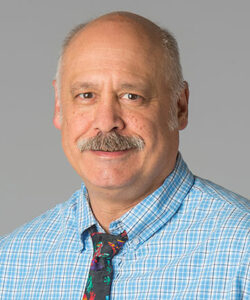Number of women using VA health care climbs here
Program aims to help more female vets gain access to benefits

The Mann-Grandstaff Veterans Affairs Medical Center, in Spokane, is narrowing the gap between the rate of female veterans enrolled in VA health-care programs here compared with male veterans enrolled, but it still has work to do, says Julie Liss, the hospital's Women Veterans Health Care Program manager.
Around 10,000 female veterans live within the Spokane VAMC's coverage area of Eastern Washington, North Idaho, and northwest Montana, Liss says. Of those, about 1,750 receive primary health care through the medical center and its outreach and rural clinics, she says.
While women make up nearly 15 percent of active-duty military personnel and 18 percent of all U.S. armed forces Reserves, they only account for about 6 percent of Veterans Affairs health care users here and nationwide.
Since 2000, however, the number of women veterans using VA health care systemwide has more than doubled, outpacing the growth in the number of male users. Locally, the number of women seeking health care through the Spokane VAMC has increased by a third in the last four years, Liss says.
Every VA hospital has a women veterans health program manager, says Liss, a veteran Navy hospital corpsman, with bachelor's and master's degrees in nursing.
"My role is a tour guide to help women vets navigate the health care system," she says.
Services provided under the women veterans health program include primary care, gynecological and reproductive care, limited maternity services, cancer screenings, management of chronic conditions, rehabilitation therapies, long-term care, and behavioral-health treatment.
Although the 63-year-old Spokane VAMC historically has provided women's health services, it only began designating certain providers as women's health-care providers a few years ago, Liss says.
The Spokane VAMC has two designated women's health care providers at the main hospital at 4815 N. Assembly, in northwest Spokane. It also has one provider at each of its community-based outreach centers in Coeur d'Alene and Wenatchee and at its five rural clinics that serve veterans throughout the Inland Northwest.
"The providers have a large percentage of women patients," Liss says. "They are interested and proficient in women's health, and they've received additional training."
The community-based clinics are staffed by Spokane VAMC personnel. Contracted providers operate the rural clinics, which are located in Colville, Republic, and Tonasket, Wash.; Sandpoint, Idaho; and Libby, Mont.
Each designated women's health care provider has a support staff that includes a registered nurse, a licensed practical nurse, and a health technician, Liss says. The providers lead patient-aligned care teams to help ensure the VA patients have access to a full range of health care services, including behavioral health.
The behavioral health program offers mental health services to help veterans adjust from deployment and provide treatment for military sexual trauma, post-traumatic stress disorder, violence and abuse, and substance abuse.
"We've found the integrated model to be very successful," Liss says. "It helps bridge communication and provide wrap-around care."
Some services, such as obstetrics and cancer treatments, aren't offered at the VAMC in Spokane, but are authorized through community providers.
"We authorize care closest to where the patient lives," Liss says.
For maternity cases, the Spokane VA's maternity care coordinator contacts pregnant vets regularly to track their care. The VA's maternity services also cover breast pumps, nurturing bras, lactation specialists, and birthing classes.
Liss says the 45- to 65-year-old age group is the largest demographic served by the Women Veterans Health Care Program, while the under-35 age group is the fastest growing.
Liss, who has managed the Spokane-based women veterans program for more than six years, says one goal of the program is to continue to close the gap between the percentage of eligible men and women who use VA health care benefits.
One reason the percentage of women using VA health care is lower than men could be that women are less likely to identify themselves as veterans, she says.
"Some struggle to see themselves as someone who's done something like World War II vets," Liss says.
Also, many women veterans simply are reluctant to seek assistance.
"Asking for help isn't something women veterans do well. They have spent most of their military careers making sure they don't stand out in terms of desiring more resources than their male counterparts," Liss says. "They have told me consistently that it's a struggle not only to ask for help, but to accept it."
In addition to identifying women eligible for VA health care benefits, Liss connects women veterans with services available through the Veteran Benefits Administration and the National Cemetery Administration, which also fall under the purview of Veterans Affairs.
"We're required to think about the whole picture," Liss says.
For instance, Liss says, the women veterans health program here recently helped one female veteran connect with housing assistance, child support enforcement, legal services, WorkSource, and education resources, in addition to health care.
"The expectation of the VA now is to educate vets about benefits," she says. "There should be no wrong door."
Liss says she promotes awareness of benefits and programs available to women veterans by participating in community health fairs, VA health care events, and communicating with other outreach resources.
"VA health care now does active outreach," she says. "That's a changing role for VA."
Liss says she's not aware of how much of the Spokane VAMC's $140 million-plus operating budget goes to the women's program.
"There's not a line item for it, but it's reasonable to assume the program will continue to grow as roles for women in the military expand and opportunities for promotion increase," she says.
Related Articles


_c.webp?t=1763626051)
_web.webp?t=1764835652)

